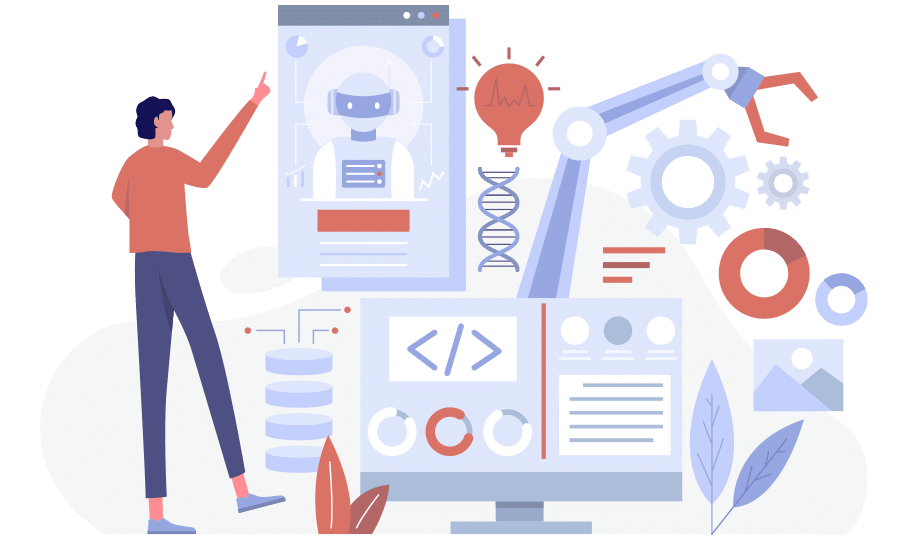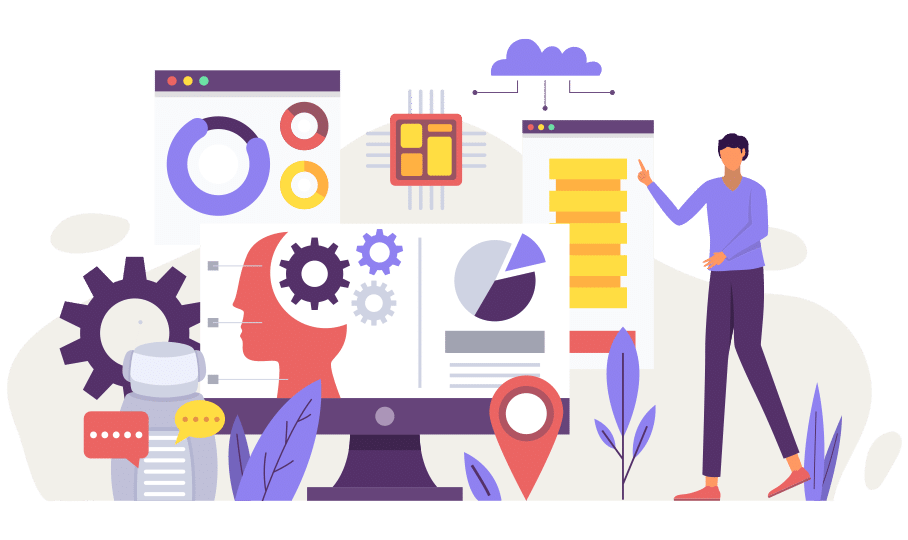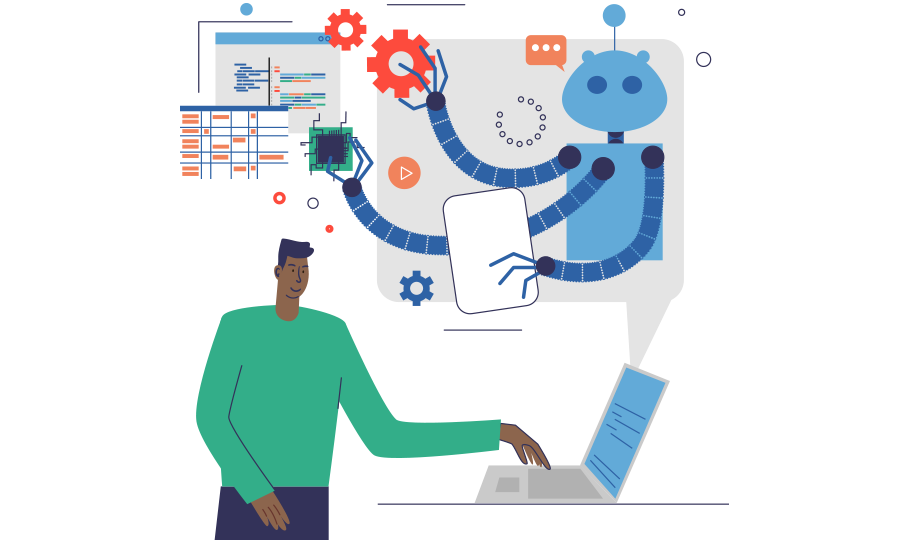Artificial Intelligence was first developed as an experimental program. It’s becoming increasingly evident that Artificial Intelligence is here to stay, as global spending on it topped $118 billion in 2022 and continues to grow. It has the potential to completely and profoundly change how businesses operate.
Table of Contents
AIOps: what does it mean?

With AI and machine learning technologies, AIOps automates and improve IT operations by combining AI and machine learning. AIOps improve IT teams’ efficiency by analyzing large volumes of data from various sources, detecting and resolving issues in real time, and predicting and preventing future incidents. By implementing AIOps, IT teams can reduce downtime, improve system performance, and enhance customer satisfaction.
What made AIOps so significant?
The scope and volume of innovation have failed to be sustained by traditional IT management strategies. Businesses realized the immense potential of AI and began spending heavily on it as a result. This pressing need for digital business transformation prompted the creation of Artificial Intelligence for IT Operations or AIOps.
The use of AI in IT operations, commonly known as AIOps, is one way AI can contribute value. AIOps is the latest trend in discovering and resolving enterprise IT challenges and optimizing processes.
What are the Benefits of AIOps?

An organization that adopts AIOps will benefit from numerous advantages, including:
A faster resolution of issues:
With AIOps, IT teams can identify and fix issues more quickly and accurately since incident detection and resolution are automated.
Insights for proactive action:
IT teams can reduce downtime and improve system performance by predicting and preventing future incidents with AIOps.
Reduction in costs:
In addition to reducing the need for manual intervention, AIOps reduce costs associated with IT operations.
Efficiencies increased:
Automation of routine tasks enables IT teams to focus on more valuable tasks and projects.
How AIOps is transforming the future of IT operations?

The AIOps revolution is changing how organizations manage their technology ecosystems and transform the future of IT operations.
Improved Visibility and Proactive Monitoring
AIOps can enhance visibility into the entire IT environment, which is one of its key advantages. Data from a wide range of sources can be collected and analyzed by AIOps platforms using machine learning algorithms, such as logs, metrics, events, and even social media feeds. By analyzing their data in a comprehensive way, IT teams gain real-time insight into their systems, applications, and infrastructure components’ performance, health, and dependencies. The proactive monitoring capabilities of AIOps ensure optimal uptime and minimize service disruptions by identifying and addressing potential issues before they escalate into critical problems.
Intelligent Root Cause Analysis and Faster Incident Resolution
In traditional IT operations management, the root causes of incidents are often identified by the manual investigation. There is a possibility of error and time-wasting in this process. As opposed to traditional operations, AIOps uses advanced analytics and machine learning techniques to analyze and correlate vast amounts of data, identifying patterns, anomalies, and causal relationships. With this intelligent root cause analysis, IT teams can quickly pinpoint and address underlying issues, thereby speeding up incident resolution. As a result of automating incident management, AIOps minimize downtime and enhance the overall user experience.
Analytics for prediction and prescription
By using predictive and prescriptive analytics, AIOps goes beyond reactive incident management. The AIOps platform can identify trends and forecast potential issues by analyzing historical data and real-time metrics. Organizations can take preventive measures before adverse consequences occur by using predictive analytics to predict capacity constraints, bottlenecks, and performance degradations. Moreover, prescriptive analytics allow IT teams to make informed decisions and optimize their operations based on historical patterns and industry best practices.
Intelligent workflows and automation
An integral part of AIOps is automation, which allows IT operations to reduce manual effort and streamline routine tasks. Automating routine processes like incident ticketing, event correlation, and routine system maintenance can be achieved with AIOps platforms. Machine learning enables these platforms to continuously improve their automated processes by learning from past actions. Despite increasing workloads and complexity, IT teams can scale operations with intelligent workflows.
Shared knowledge and enhanced collaboration
Collaboration between IT teams is promoted through AIOps. Using AIOps platforms facilitates cross-functional communication and collaboration by centralizing data, insights, and alerts. A unified platform allows different teams to share information, troubleshoot issues, and align efforts, including IT operations, development, and security. The collaborative features in the platform, such as shared dashboards, automated notifications, and contextual insights, promote a sense of teamwork and facilitate faster problem-solving.
Conclusion
AIOps is the game-changer for businesses who have a hard time adapting. In the future, AIOps will continue to challenge IT service management. As a result, businesses avoid problems, save money, improve customer service, and use IT staff to develop cutting-edge solutions rather than maintain legacy systems. As performance and availability requirements grow, the IT department’s strategic importance and visibility within the organization increase. To know more contact Carmatec.
FREQUENTLY ASKED QUESTIONS
According to Gartner, the AIOps market will grow by 15 percent annually through 2024, reaching $3.4 billion in market value.
Using AI and data science, AIOps gives IT operations teams a real-time insight into any problems affecting digital services, including unforeseen ones for which rules haven’t yet been crafted.
AIOps consists of four critical stages:
- Training the model and collecting data.
- Detection and triage automated.
- Remediation and response are automated.
- Continual learning.
In addition to reducing costs, optimizing resource utilization and capacity, identifying threats and performance anomalies sooner, and resolving issues faster, AIOps has helped organizations understand and address operational challenges more effectively.
AIOps uses DevOps to manage and automate all the applications that constitute the AIOps. DataOps, MLOps and DevOps can all benefit from AIOps in terms of optimizing and making better decisions throughout the software development lifecycle.













